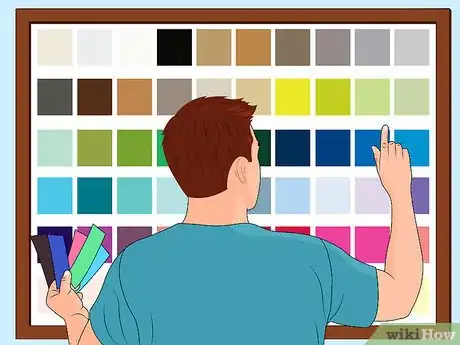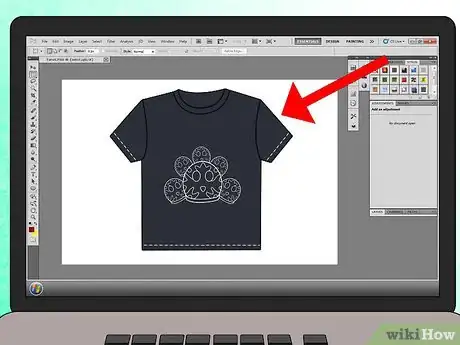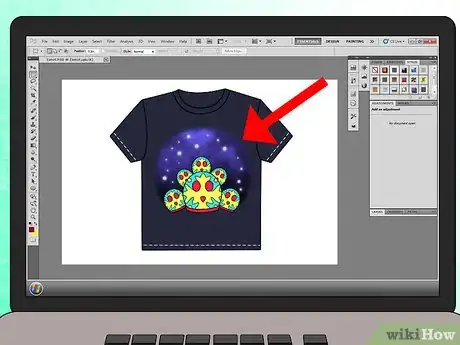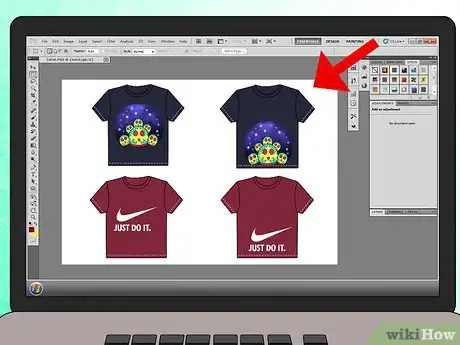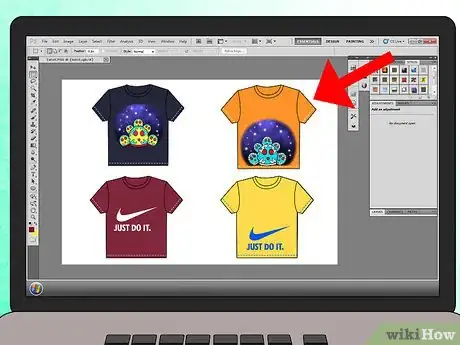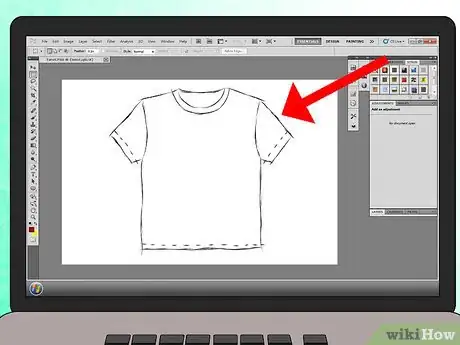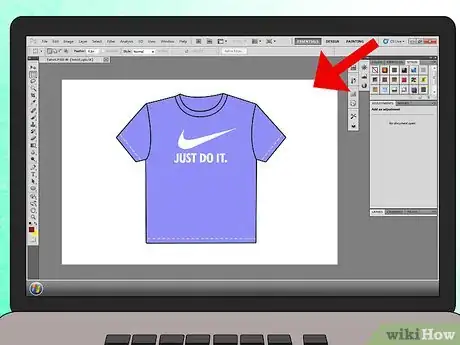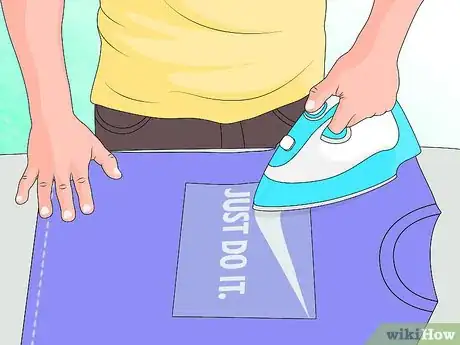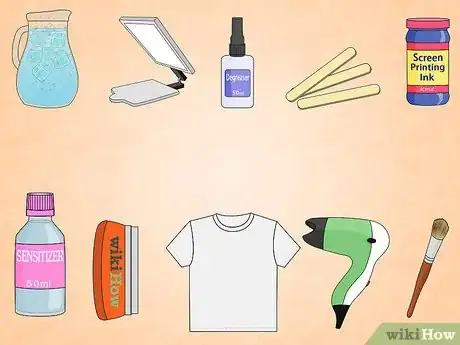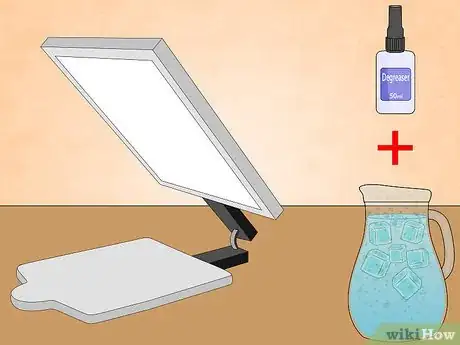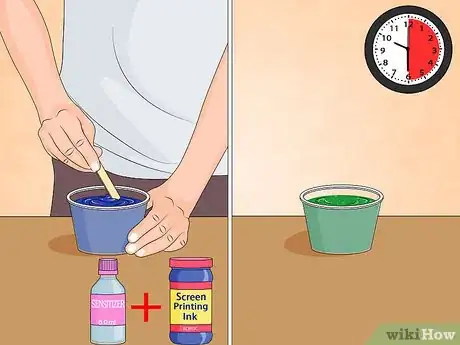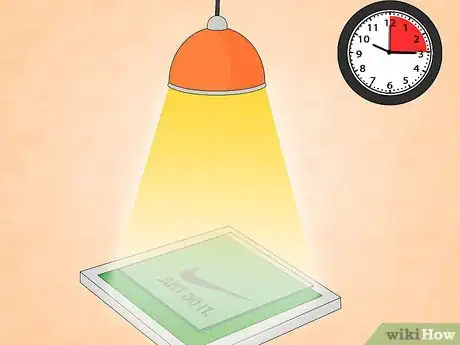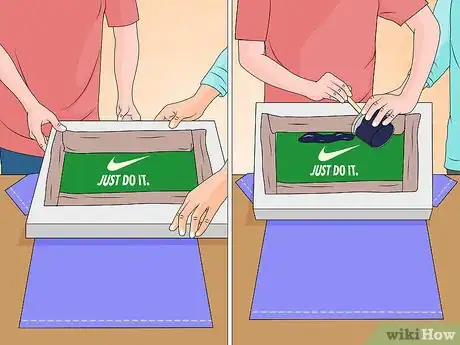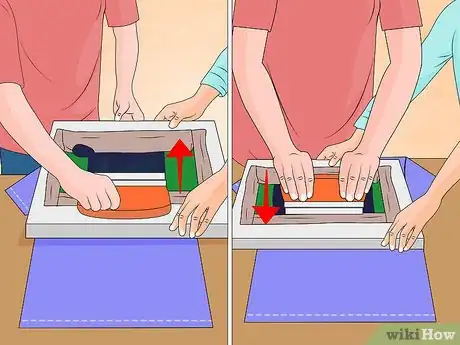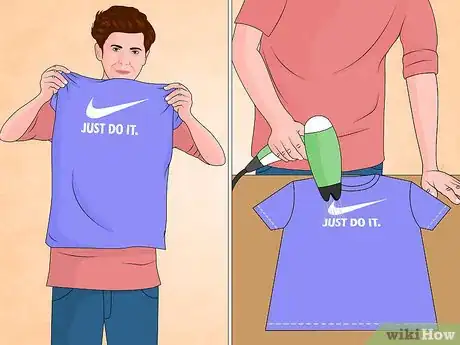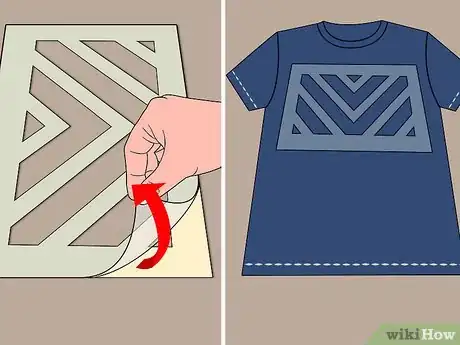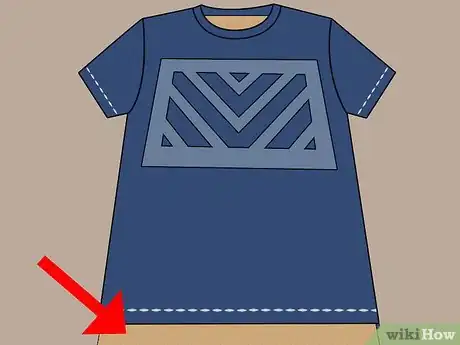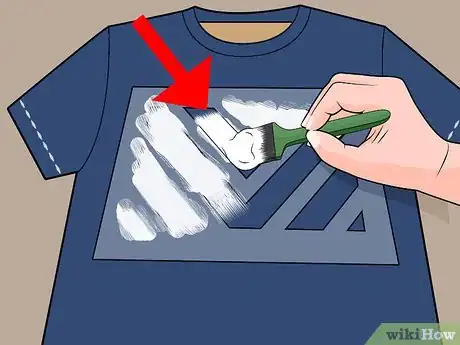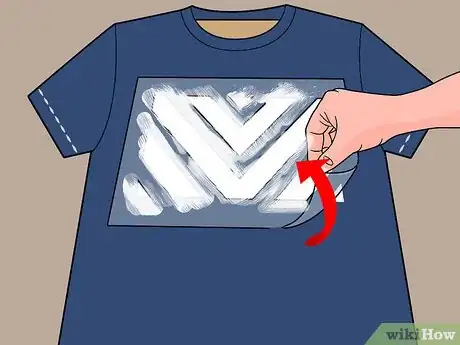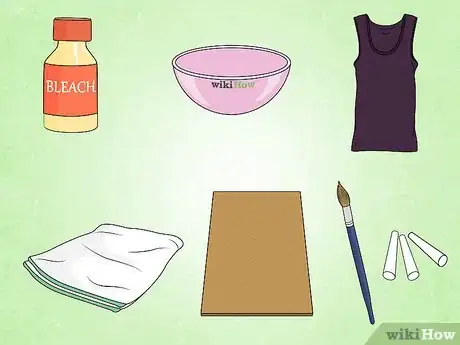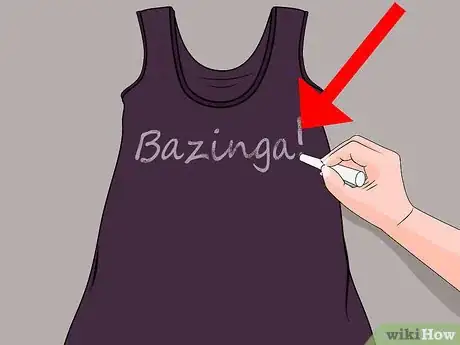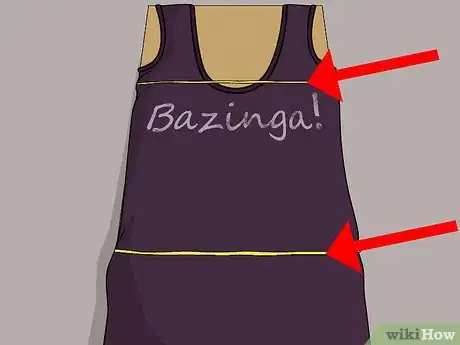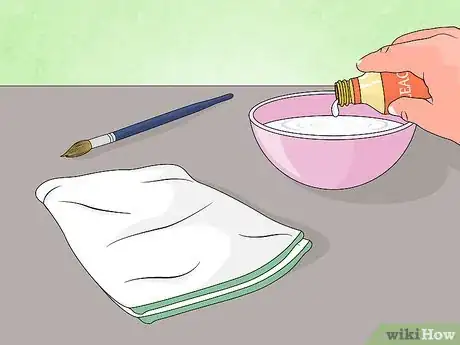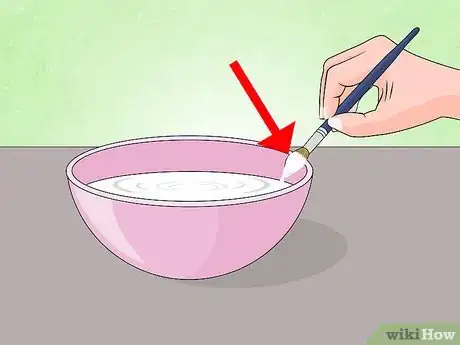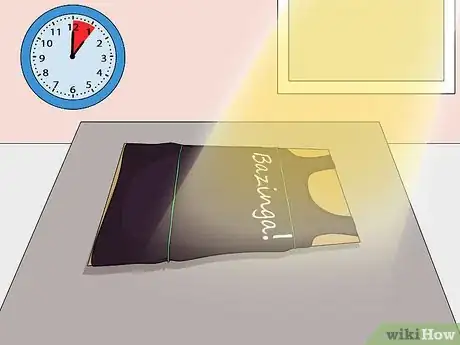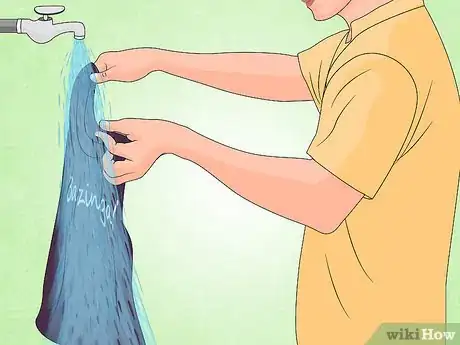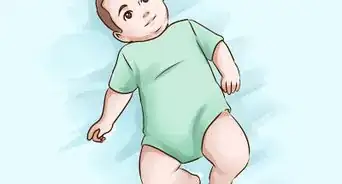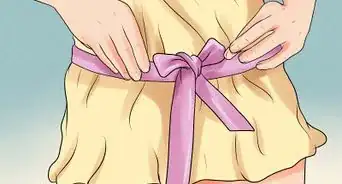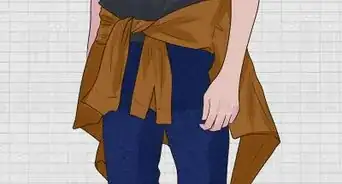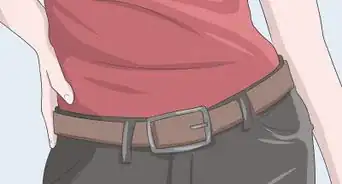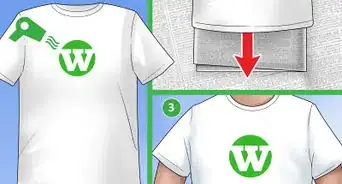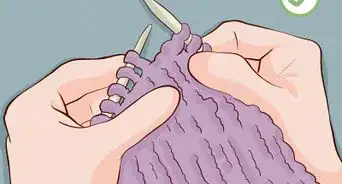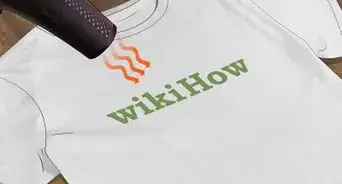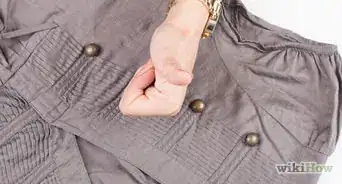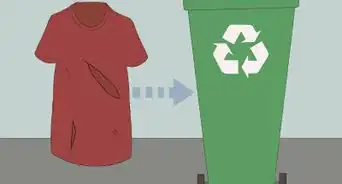This article was co-authored by Alessio Iadicicco. Alessio Iadicicco is an Apparel Manufacturing Specialist and the CEO and Co-Founder of MarkersValley, an online apparel and manufacturer sourcing platform that connects luxury fashion brands to a network of highly-vetted, truly Italian manufacturers. He holds a Bachelor's degree in Economy and Management of Financial Enterprises from The University of Naples Federico II. MarkersValley has connected fashion brands in over 100 countries and has a network of over 100 independent Italian factories and artisans. MarkersValley has been featured in Forbes, EQ, St. Louis Business Journal, Il Mattino, and Corriere Della Sera.
There are 12 references cited in this article, which can be found at the bottom of the page.
wikiHow marks an article as reader-approved once it receives enough positive feedback. This article received 11 testimonials and 80% of readers who voted found it helpful, earning it our reader-approved status.
This article has been viewed 1,552,477 times.
Designing your own t-shirt can be a fun, creative activity, and may even bring you some money if you decide to sell your designs. Whether you intend to print the shirt yourself or send it off to a professional printer, you can still come up with the design for your shirt right at home.
Steps
Planning Your Design
-
1Think about what your design is going to represent. Maybe you are advertising your cleaning company, your rock band, or your favorite sports team. Maybe you’re using a personal illustration. The purpose of the design will determine the design.
- If you are advertising a company, band, sporting team, or brand, you will likely need to focus on logo. The Nike swoosh logo, for example, is a very simple but effective design. A design for a sporting team might feature the team colors or the team’s mascot. A design for your band might focus on an image of the band or a graphic that represents the band’s style or sound.
- If you are making a t-shirt to showcase a personal illustration or drawing, you will need to focus on how it will look on a t-shirt. Think about how original the illustration is and how the colors are working in the illustration.
- Consider using a photo in your design. Use your own photo. You may use a picture made by someone else, but only if you have acquired the legal rights to use that image. You can also buy a stock image.
-
2Pick a color scheme. When designing a t-shirt, its important to think about color contrast. This means how certain ink colors in the design will appear against a lighter colored shirt or a darker colored shirt. Certain ink colors look more vibrant on a lighter or darker shirt on the computer screen than they actually do when printed.[1]
- When using lighter shirts, avoid pastel colors like yellow, light blue, or light pink. These colors will be visible on the shirts but may not be legible at a distance. And if you are designing a shirt with a logo, you want to make sure that logo is legible from far away!
- If you decide to use pastel colors, add an outline of a darker color to the lighter color to highlight the text and make it easier to read.
- Darker colored shirts look good with lighter ink colors, such as pastels. But be careful when using darker ink colors on darker colored shirts like cardinal (dark blue), maroon, or forest green. These colors may look great on the computer or in a drawing, but when they print, the shirt color sometimes distorts the ink color. As a result, they can appear more brown or dull.
- If you decide to use Adobe Illustrator to create your design, the Global Colours settings can help immensely with color schemes.[2]
Advertisement -
3Add dimension to the design. Once you’ve added your colors to the design, it may look good but still a bit flat or one dimensional. To create more depth to a certain area of the design, add a color that is the shade of the color beneath it. This will brighten up the design and give it some dimension.[3]
- If you plan to use software with a high capacity for manipulation (such as Adobe Photoshop, InDesign, Gimp, Adobe Illustrator, or Paint Shop Pro), you can use a standard image and radically transform it to fit your needs.
- Creating a vector outline on Inkscape is an especially effective way to resize a photo if necessary.
-
4Balance your design. This means combining all the parts or elements to form a whole. How you do this depends on the composition of your design. Maybe your design has a lot of smaller elements, like stars, plants or animals. Or may it is one large design with one main figure or image.
- Think about how you can make the design look cohesive, so that all the parts or elements fit well together. A balanced image will immediately draw the eye in rather than away from an image.
-
5Determine the placement of the design on the t-shirt. Would your design work better as a centered image, an image on the top left of the t-shirt or as a wraparound image?
- If you are designing a t shirt for a brand or company, a simple design in the center of the shirt may be the most effective.
- Don’t forget you can also use the back of the t-shirt to include a branding slogan (“Just Do It”). Or a song lyric from a song by the band you are designing the shirt for.
-
6Complete a final mock up of the design. It’s best to sketch your ideas out before putting them on your t-shirt. Try out several different designs and color combinations. Keep in mind color contrast and dimension. Make sure the image is balanced and cohesive.[4]
- When in doubt, get a second opinion. Ask friends, family, or coworkers what design and color scheme they like best.
Making a Digital Image of the Design
-
1Use Adobe Photoshop to touch up your paper sketches. If your paper sketches are not high quality or drawn with clear lines, this option may not work. If your sketch is high quality:
- Scan the sketches to your computer. Then, retouch them in Photoshop.
- Clean up the lines. Play with the filters, colors, brightness, contrast, saturation, or any other effects at your disposal.
- Add lines, flourishes, splatter effects, and other embellishments that might make the design more dynamic and balanced (where appropriate).
- Make sure that the entire layout is internally consistent by keeping proportions reasonable, styles consistent, and colors cohesive.
-
2Use computer software to create the design. If you aren’t happy with the quality of your paper sketches, use computer software to draw line art on Photoshop.
- If you have a computer drawing tablet, you can color and draw straight onto Photoshop or a similar program.
-
3Add text to the design, if desire. Look for a font that complements your overall design, rather than overwhelm it. The font should work with the image(s) in your design to create a balanced design.
- Think about the fonts on some of the more well known logos or designs. The font should relate back to the company or brand’s overall style. Nike’s Just Do It’s slogan, for example, is in a bold and simple font, just like their bold and simple swoosh logo. In contrast, the font used for a sports team or a garage rock band may be more elaborate or ornate.
- Make sure any filters you are using on the design are also applied to the font. If you are working with layers on Photoshop, you will need to drag your font layers below the photo effects layers.[5]
- Use free fonts from an online site like defont.com. You can also access free brush designs from brusheezy.com.[6]
- Look at how to add fonts to your PC, Illustrator, or Photoshop if necessary.
- If you’re feeling adventurous with design, you can make your own.
-
4Create a prototype. The easiest way to do this is to print the design and iron it onto a plain shirt. However, if you want to test the quality of your design, you can hire a printing company to create a professional prototype.
-
5Produce the shirt(s). For a small-scale operation, you can continue ironing on the design.
- If you’d like to make shirts at a larger scale, however, you can pay a printing company to make them for you.
- Digital printing is the cheapest option as far as only need to get a print on a small quantity of t-shirts.
- Screen printing gives better design results that lasts longer over time, but it also comes with a higher one-time print cost.
Screen-Printing Your Design
-
1Gather your supplies. To screen-print your design at home, you will need:[7]
- A plain t-shirt
- 50 ml bottle of degreaser (available at your local art store)
- 1 liter cold water
- A large brush
- 500 ml of emulsion
- A small bottle of sensitizer
- A bottle of screen printing ink
- A squeegee or a coating tray
- A small wooden stick
- A hair dryer
- A transparency
- A printing screen
- You can purchase a printing screen at your local art store. Or make your own by buying a mesh screen and a canvas stretcher frame. Stretch the mesh across the frame and staple the edges down so that the mesh is taut. For standard designs on a light shirt, a 110-195 mesh works best. For fine designs with multiple colors, use a 156-230 mesh.[8]
-
2Prepare the printing screen. Mix the degreaser and the cold water together. Place the brush in the mixture and then brush the mixture on to the screen.
- Make sure you brush both sides of the screen. You just want to give the screen a light brush so don’t worry about putting too much of the mixture on the screen.
- Let the screen dry.
-
3Mix the emulsion and the sensitizer together. Take 20 milliliters (0.68 fl oz) of water and pour it into the bottle of sensitizer. Mix the sensitizer well by shaking for an about a minute.
- Add the sensitizer into the emulsion.
- Use the small wooden stick to mix the sensitizer and the emulsion together.
- The color of the emulsion should change from blue to green. There should also be small bubbles forming in the emulsion.
- Place the lid loosely back on the emulsion and place it in a dark area or room for an hour. After an hour, check that all the small bubbles in the emulsion have disappeared.
- If they do not disappear after an hour, leave the emulsion to sit for another hour until the bubbles are gone.
-
4Apply the emulsion on the screen. In a very dim room or with a low red light, drip a line of photo emulsion across the screen and use a squeegee to spread it around.[9]
- The emulsion will leak through the screen, so be sure to squeegee both sides of the screen.[10]
- You can also use a coating tray to apply the emulsion to the screen. Do this by placing the screen on a clean towel and tilting it away from you slightly. Place the coating tray at the bottom of the screen and carefully pour the emulsion on the screen as you move the tray up the screen.
- Leave the emulsion to dry in a completely black room for about twenty minutes. Use a fan to help the screen dry.[11]
-
5Place the transparency down backward on the screen. Now you’re ready to burn your image into the emulsion. Do this by placing the screen flat, placing the transparency down backward, and placing a piece of glass over the transparency to ensure that it doesn’t move.[12]
-
6Burn the design into the emulsion. A 500-watt lightbulb will burn the transparency image into the emulsion in roughly fifteen minutes.
- The exact times for this process depend on the light and emulsion you use.[13]
- Specific directions for the light needed should be on the packaging of the purchased emulsion.
-
7Rinse the screen. Let the screen soak in a thin layer of water for about two minutes. Then rinse any excess emulsion off with a hose or in the shower.[14]
-
8Place waterproof tape around the edges of the underside of the screen. The flat side of the screen will go facedown on the shirt, and the side with the frame is where you will use the ink.
- To make sure no ink ends up leaking around the frame, use waterproof tape to secure around the edges where the screen stretches over the frame.[15]
-
9Lay your t-shirt on a flat surface. Make sure there are no wrinkles. Place the screen on top of the t-shirt, where you would like your design to be. Place the screen on top, making sure that the screen and design are aligned.
- Clip your shirt down to a firm piece of cardboard. Doing this will ensure your t-shirt remains flat and unwrinkled. It will also make it easier to move your t-shirt to a safe spot later to dry.
- If possible, have a friend hold the screen down tight while you spread the ink.
-
10Spread a tablespoon of screen printing ink on the top of the screen. Using your squeegee, coat the screen by spreading the line of ink from top to bottom.
- The mesh is actually quite thick, so this step is more of a primer.[16]
- Use very light pressure so you don’t push any ink through the screen.
-
11Squeegee the screen. With the screen flooded, you’re ready to transfer the design to the shirt.
- Use the squeegee at a 45° angle in both hands to evenly distribute the pressure. If possible, ask a friend to hold the screen in place.
- Drag the ink back up across the flooded screen over the design.[17]
-
12Cure the ink. Using a hairdryer, apply even heat to the design for several minutes.[18]
- Cure the ink before using the next screen to add additional layers of the graphic in different colors.
- If you use the proper screen-printing technique and cure it, your t-shirt will be washing machine safe.
-
13Wash your screen once you are done making your shirts. Use cold water and scrub it with a sponge to get the ink out. Let the screen air dry.
Stenciling Your Design
-
1Gather your materials. To stencil your design onto a t-shirt, you will need:
- A black and white print out of your design. Its important to use a black and white printout of your design so it will be easy to trace.
- A piece of contact paper, or a transparency
- A craft knife, or exacto knife
- A plain t-shirt
- A piece of cardboard big enough to cover the front area of the shirt
-
2Tape the design to a piece of contact paper. Contact paper is clear paper used for covering books. It has a normal side and a sticky side that peels off. You want to tape your paper to the peeling side so that the design is visible through the front of the contact paper—the non-sticky side.[19]
- You can also use a piece of transparency or clear paper. Attach it to the printout of your design with tape.[20]
-
3Use a sharp craft knife to cut out the black parts of the design. Lay the attached papers on a flat surface, like a table.
- Trace the lines with the craft knife or an exacto knife. Keep in mind the black parts you cut out are the parts of the design that will be filled with paint.[21]
-
4Peel the sticky side off the contact paper. Remove the normal paper with the design from the contact paper as well. Place the sticky stencil onto the t-shirt, making sure it is straight and not wrinkled.
- If you are using a transparency or clear paper instead of contact paper, attach the transparency to the shirt with tape.[22]
-
5Place a piece of cardboard inside the t-shirt. Doing this separates the front and back so the ink doesn’t bleed through to the other side.
-
6Use a sponge brush to paint on the fabric paint. Only put paint on the spots that have been cut out of the contact paper—the spots that will be painted in dark on the t-shirt.[23]
- Let the paint dry. Test the paint by gently touching the painted spots. If paint comes away on your finger, it is not fully dry.
-
7Peel the contact paper off of the t-shirt when the paint is dry. You will now have a stenciled on t-shirt.
- You can use the stencil to make another shirt if you want more than one stenciled t-shirt.
Bleach Painting Your Design
-
1Use bleach safely. Bleach painting is a fun, easy, and inexpensive way to create a design on a t-shirt, especially text based designs. But, remember bleach is toxic, so keep it out of reach of children.[24]
- Always protect your eyes, clothing, and any open cuts from coming into contact with bleach.
- If you have sensitive skin, you should wear thin kitchen gloves while bleach painting.
-
2Gather your supplies. You will need:
- Fabric safe household bleach
- A synthetic bristle paint brush (go for an inexpensive one, as you’ll just be bleaching it anyway!)
- A glass or ceramic bowl
- A white towel or rag
- White chalk
- A piece of cardboard
- A dark colored cotton blend shirt
- You can try this method on a lighter colored shirt, but the bleach painting will show up better on darker colors.
-
3Place your shirt on a flat surface. Then, slide the piece of cardboard inside your shirt. It will act as an even surface as you write your design. It will also stop the bleach from bleeding through the back of your shirt.
-
4Use the white chalk to sketch out your design on the shirt. This could be your favorite saying (“Bazinga!” “Reach for the Stars”), the name of your band, or the logo of your brand.
- Don’t worry if you need the smudge out the chalk lines and re-sketch the design. The chalk lines will wash out once you’ve completed the bleach painting.
-
5Fold the sides of the shirt under the cardboard. Secure the shirt to the cardboard with elastics or small clips. This will keep the cardboard from slipping while you bleach paint.
-
6Prepare the bleach. Pour a few cups of the bleach into the glass or ceramic bowl. Use a towel to wipe up any drips. You don’t want any drops of bleach to end up on your clothing.
-
7Dip your brush into the bleach. Drag it on the edge of the bowl to eliminate any dripping.
-
8Use steady strokes to trace the chalk lines of your design. For an even bleach line, reload your brush every two inches. The fabric will quickly soak up the liquid so work quickly, but with a steady hand.
-
9Finish tracing your design. Then, take a break to allow the bleach to react with the fabric of the shirt.
- Look over the shirt. Are there any uneven spots or light areas? If so, go back in with your bleach filled brush and even out the design.
-
10Let the shirt sit in the sun for at least an hour. This will allow the bleach to process and lighten.
- Depending on the cotton content of your shirt, the color of your design will range from dark red, to orange, to pink, or even white.
-
11Rinse and hand wash your shirt. Hang it to dry. Admire your new permanent bleach design.
- Wash the shirt with like colors. The chalk lines should wash out, leaving only the bleach design.
Community Q&A
-
QuestionIs it possible for a child to make a shirt out of these steps?
 Community AnswerYes, a child could do so but it should be done under adult supervision. Try simple designs in the beginning.
Community AnswerYes, a child could do so but it should be done under adult supervision. Try simple designs in the beginning. -
QuestionWouldn't it be simpler to do if I printed out my design on iron-on application paper?
 Community AnswerYes, it would.
Community AnswerYes, it would. -
QuestionWhat do I do if I designed it on paper?
 Community AnswerYou can photocopy the image, put it on cardboard, and make a stencil out of it.
Community AnswerYou can photocopy the image, put it on cardboard, and make a stencil out of it.
References
- ↑ http://www.customink.com/help_center/choosing-the-best-ink-colors
- ↑ http://www.creativebloq.com/design/guide-t-shirt-printing-designers-912867
- ↑ http://www.howtostartaclothingcompany.com/coloring-tips-tshirt-designs/
- ↑ http://www.creativebloq.com/design/guide-t-shirt-printing-designers-912867
- ↑ https://www.youtube.com/watch?v=1HVIGMQY9ng
- ↑ http://www.brusheezy.com/
- ↑ https://www.youtube.com/watch?v=Zk7TuSPPmtY
- ↑ http://www.victoryfactory.com/FAQ.htm
- ↑ https://www.youtube.com/watch?v=LTGPMuTLCNw
- ↑ https://www.youtube.com/watch?v=LTGPMuTLCNw
- ↑ https://www.youtube.com/watch?v=LTGPMuTLCNw
- ↑ https://www.youtube.com/watch?v=LTGPMuTLCNw
- ↑ https://www.youtube.com/watch?v=LTGPMuTLCNw
- ↑ https://www.youtube.com/watch?v=LTGPMuTLCNw
- ↑ https://www.youtube.com/watch?v=LTGPMuTLCNw
- ↑ https://www.youtube.com/watch?v=LTGPMuTLCNw
- ↑ https://www.youtube.com/watch?v=LTGPMuTLCNw
- ↑ https://www.youtube.com/watch?v=LTGPMuTLCNw
- ↑ http://rookiemag.com/2013/05/diy-stenciling/
- ↑ https://snapguide.com/guides/make-a-personalised-t-shirt-with-a-stencil/
- ↑ http://www.rookiemag.com/2013/05/diy-stenciling/
- ↑ https://snapguide.com/guides/make-a-personalised-t-shirt-with-a-stencil/
- ↑ http://www.rookiemag.com/2013/05/diy-stenciling/
- ↑ http://www.abeautifulmess.com/2012/03/bleach-painting-on-textiles-diy.html
About This Article
To design your own t-shirt, start by picking a color scheme, and decide which color will be the fabric of the t-shirt and which will be the font or image. Use a software like Adobe Photoshop to draw out your design on a t-shirt shape and determine where the design will fit best. Be sure to account for the size of the shirt when picking the placement, and choose where you want the design on the front or the back. Before you send your shirt to be printed, make a prototype by printing the design and ironing it onto a plain shirt. To learn more, like how to screen-print or draw your design with a stencil, keep reading the article!

